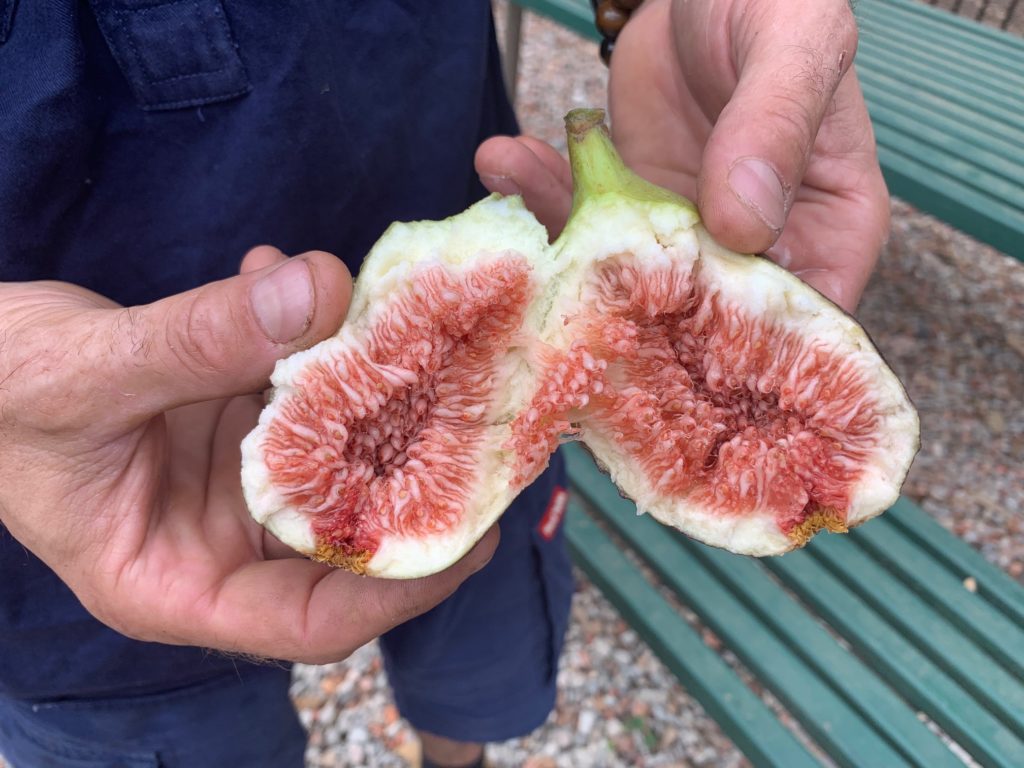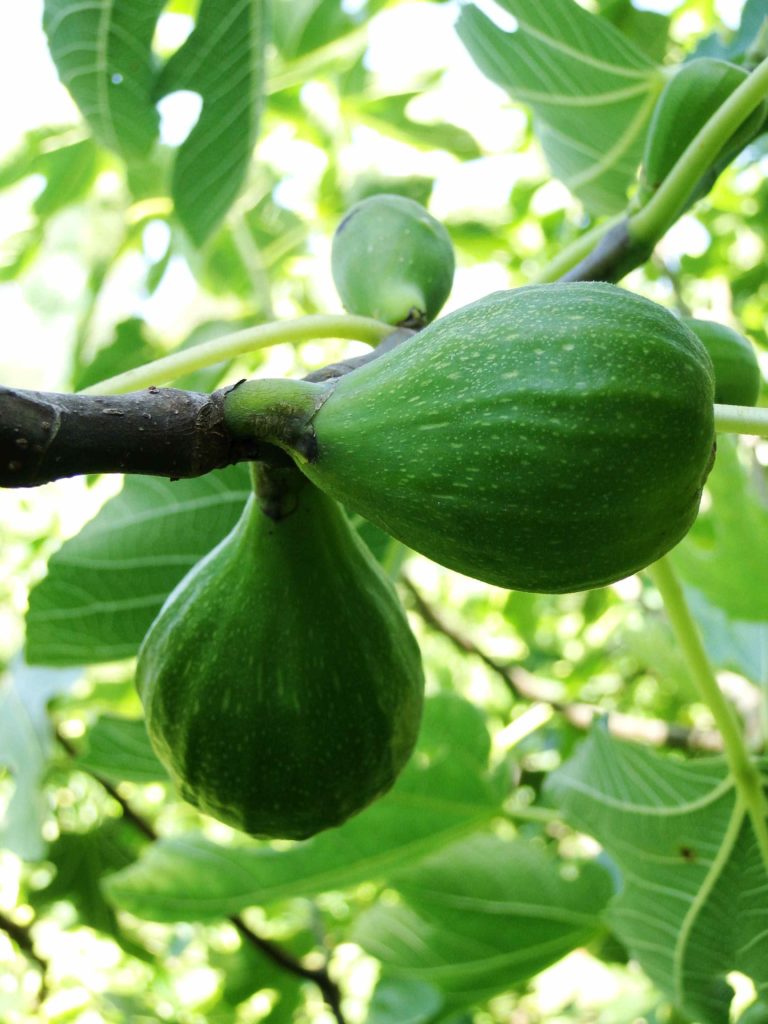Fabulous Figs
Fig tree, for such a long time I have found meaning
in the way you almost completely omit your blossoms
and urge your pure mystery, unproclaimed, into the early ripening fruit. Rainer Maria Rilke, from The Sixth Elegy
“Ancient, mysterious and delicious, the fig should be more widely grown than it is,” writes David Stuart in The Kitchen Garden.
He points out that if you plant a fig tree in your garden, you will have something that grew in the earliest gardens of all. The fig and the grape were two of the plants that survived the Ice Age. Since then, painters and writers have been celebrating these hardy bearers, weaving myths and legends around them.

A member of the mulberry family, the fig is one of the most ancient plants, popular everywhere in the Middle East since at least 3000BC. Figs grew in the Garden of Eden and in the hanging gardens of Babylon. They were dried for preservation by burying in the hot sands. They were also a favourite of the ancient Greeks, who believed they were a special gift from Ceres to the city of Athens and who planted a grove of fig trees in the city’s market place.
The genus Ficus includes over 750 species. Some ripen underground, there’s grow high in the air, some grow on low trailing shrubs in the desert. There are large figs, small figs, round figs and ovoid figs, black, brown, red, green, purple, yellow and white. The most famous of all is the Smyrna fig, which hails from western Turkey, home of the domesticated fig.

I love figs and think they should be more widely grown.
The very best way to eat them is either fresh from the tree, or gathered in the early morning, set on a fig leaf in a dish in pyramid form and eaten warm from the sun at midday.
It doesn’t matter if they’re black, purple, brown, green or greenish-gold. Figs vary from region to region in taste, though they may look the same.
You know they’re ripe when a bead of nectar appears at the opening of the fruit.
I remember seeing them presented like this in the film, The Belly of an Architect, in which the protagonist was obsessed by green figs.
And in Women in Love, Alan Bates bites into a fig to expose, to his amazed guest, the deep red mass of flowers inside the soft skin.
An aura of sexuality has always surrounded this sublime fruit.

They’re delicious as an entrée with pomegranates, witlof and pears or stuffed with mascarpone reale (a mixture of mascarpone and gorgonzola cheese).
For dessert, slice them on warm toasted slices of brioche, spread with ricotta and drizzled with honey.
Caramelised figs are lovely, as are figs served with pannacotta or crème brulee.

Or serve them on a cheese platter with fresh goats cheese and soft brie. Don’t peel them – they’re best eaten skins and all.
Figs are quick-growing, deciduous trees. For the kitchen garden, they are ideal because many varieties bear a better crop if their roots are constricted.
Plant a fig tree today.
